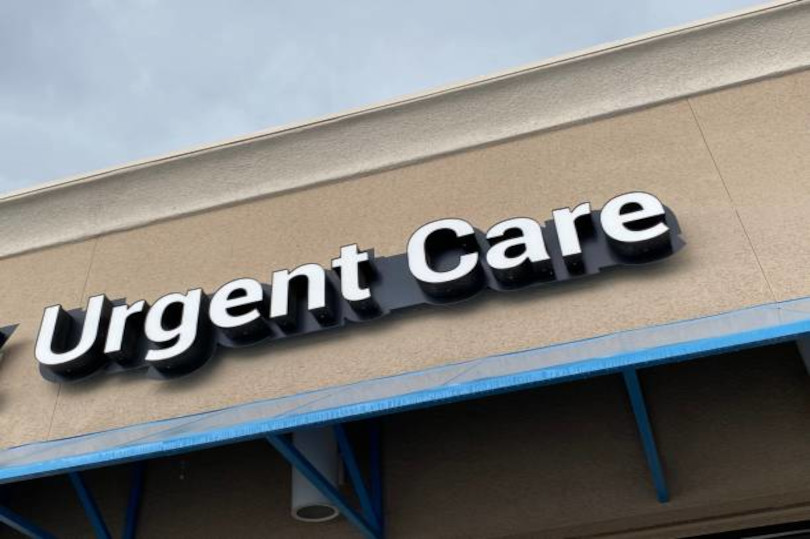Most of us have heard—or have had—our fair share of emergency room horror stories: waiting for hours and hours to be triaged by busy ER physicians and nurses, only to be sent home with no treatment or insufficient treatment for our ailments and injuries.
For residents of the greater Washington DC area, such ER woes appear to be even worse than they are for most Americans. Data shared by the Milken Institute of Public Health of George Washington University reveal that the typical wait time in DC emergency rooms of 46 minutes is nearly twice the national average of 28 minutes. The District has a whopping 736 emergency room visits per 1,000 people, compared to the national average of 415 per 1,000 people, and DC hospitals overall boast some of the highest hospital admission rates in the country.
Within the past decade, DC has also faced a primary care provider shortage —and that\’s not even counting the impact of the recent pandemic. It follows that the District\’s Department of Health (DOH) has designated as many as nine Health Professional Shortage Areas (HPSAs) and eight Medically Underserved Areas\\Populations (MUA\\P).
In response to these challenges, urgent care centers have become increasingly popular in the greater DC area. While these freestanding clinics stand to increase access to care for residents across the DC area, they aren\’t without their own problems. Here\’s what to expect if you or your loved one seeks help at an urgent care clinic in Washington DC.
What Are Urgent Care Centers?
According to the American College of Emergency Physicians (ACEP), urgent care centers—also called walk-in clinics, retail health clinics, minor care clinics, minute clinics, minor emergency centers, and quick care clinics—are ambulatory healthcare facilities that deliver medical care for minor illnesses and injuries, typically outside a traditional hospital-based or freestanding emergency department. These urgent care centers are generally staffed by nurse practitioners, physician assistants, and nurses and may be associated with a local hospital or operate under the guise of their own company name.
While their state licensing requirements may be more limited compared to hospital-based or freestanding emergency rooms, urgent care centers must fulfill certain criteria, such as:
- Accept walk-in patients during regular business hours
- Be open 7 days per week
- Have multiple exam rooms and on-site diagnostic technology and equipment
- Have a licensed physician as its medical director
- Employ staff that can treat a broad spectrum of non-life-threatening illness and injury, and perform minor medical procedures
When to Visit an Urgent Care Clinic vs ER
Urgent care clinics and walk-in clinics are good places to go when dealing with a medical concern that should be treated right away but is not considered a true emergency. True emergencies, such as trouble breathing, serious burns or wounds, altered mental status, broken bones, or any life-threatening issues, require an ER visit.
Common signs and symptoms that may warrant an urgent care visit include:
- Fever without a rash
- Painful urination
- Ear pain
- Vomiting or persistent diarrhea
- Eye redness or itchiness
- Sore throat
- Abdominal pain
- Wheezing or shortness of breath
- Dehydration
- Moderate flu-like symptoms
- Sprains and strains
- Small cuts that may require stitches
DC Urgent Care Centers—Potential Benefits and Drawbacks
According to Yelp, the following are the ten best urgent care centers in DC (last updated December 2021):
- AllCare Family Medicine and Urgent Care
- Doctors to You in Penn Quarter
- Farragut Medical and Travel Care
- MetroHealth
- Heal
- MedStar Urgent Care Capitol Hill
- GW Immediate and Primary Care McPherson Square
- MinuteClinic
- GW Immediate and Primary Care Rhode Island Avenue
- SDM 1-Stop Primary Urgent Care
These top urgent care centers—ten out of more than 130 in the greater DC area, including neighboring counties from Maryland, Virginia, and West Virginia—rank high due to factors like short wait times, clean facilities, and friendly staff. These urgent care centers typically, but do not always, take insurance and can be a more affordable option for individuals who are uninsured or have high co-pays for ER utilization. It should be noted that, unlike ERs, urgent care clinics can turn people away for inability to pay.
According to a recent article published in The Journal of Urgent Care Medicine, DC remains an attractive metropolitan area for additional urgent care growth, despite being the most saturated area in the U.S. for urgent care centers. Such a competitive market may help drive improvements and innovations to the direct benefit the DC consumer.
However, short wait times are not always guaranteed at urgent care facilities, especially during busier times like weekends, evenings, and holidays—essentially, any time a person\’s normal doctor\’s office would be closed. Long wait times are especially challenging in areas of the city already recognized by the DOH as medically underserved.
Tips for Using Urgent Care Clinics
- Do not go to urgent care clinics if you have a genuinely life-threatening emergency.
- When possible, make an appointment. While urgent care centers accept walk-in visits, people who arrive without appointments may find themselves waiting for several hours—that\’s about as long as one would wait in a busy ER.
- Bring a list of your medications, past medical diagnoses, present health concerns, and, if applicable, your primary care physician\’s contact information and health insurance card. One concern of urgent care clinics is that there may be less continuity of care and collaboration between primary care doctors and the urgent care team. This could lead to potentially harmful mix-ups, including contraindicated prescriptions and lack of sufficient follow-up care. You can ask your clinic to send information about your visit to your primary care doctor and then schedule a follow-up visit with your doctor later.
https://www.acep.org/patient-care/policy-statements/urgent-care-centers/
https://www.washingtonpost.com/national/health-science/shortage-of-primary-care-doctors-in-dc-new-report-finds/2013/09/25/2c05ccba-2592-11e3-b3e9-d97fb087acd6_story.html
https://onlinepublichealth.gwu.edu/resources/reducing-er-visits-dc/
https://dchealth.dc.gov/service/shortage-designation
https://www.health.harvard.edu/blog/retail-health-clinics-the-pros-and-cons-201601158979
https://www.healthline.com/health/right-care-right-time/know-before-you-go#takeaway
https://www.debt.org/medical/emergency-room-urgent-care-costs/


